Jellyfish, art and ancient warfare
Earlier this week, we posted 39 new catalogue pieces on our website. Designs that we have worked long and hard to bring about, we are now excited and proud to present. Though it is hard to pick a favorite, I’m going to. Hands down, and for the next three or four days at least, it is Kendy Bellony’s jellyfish.
Isn’t it elegant? That’s what I think of when I think of jellyfish. Elegance. I saw them in an aquarium one time and in that particular exhibit, each of the tanks was surrounded by a heavy, highly ornate, gilt frame and in the background, classical music was playing – Bach or Handel, I’m sure. It seemed entirely appropriate as I marveled at the jellies gliding with refined grace through the water on the other side of glass. Watching this video by David Regner for the National Aquarium in Baltimore took me right back to that experience. http://www.youtube.com/watch?v=aJUuotjE3u8 They are works of art, pure and simple.
Kendy’s sculpture looks to me like a sea nettle, which is a type of jellyfish found in both the Atlantic and Pacific oceans. They are characterized by their long tentacles and frilly mouth-arms (I did not make that up. That’s what they are called, according to the Monterey Bay Aquarium website.) and by the star-like pattern on the top of their bell. They eat zooplankton, small crustaceans, and other jellies, while they are preyed upon by tuna, dogfish, butterfish, sunfish, and sea turtles. Jellyfish as a species have no blood, brains, teeth, or fins and are 95% water, which sort of makes you wonder about nutritional value and why ANYTHING bothers to eat them at all. Balance of nature and circle of life considerations, I presume, or maybe just roughage…
The splendid, flowing tentacles and mouth-arms of the jellies are, of course, where the “sting” is carried. This insidious business is conducted by a multitude of stinging cells called nematocysts, which vary in toxicity from mildly irritating to deadly. Though my research resources are replete with gee-whiz facts with regard to “the sting,” this one, in my opinion takes the cake: The National Aquarium website reports that the ancient ninja warriors of Japan used to scatter dried venom from the Northern Sea Nettle into the wind to irritate the nose and eyes of their enemies during battle.
Sayonara, Baby!
Contributed by Linda for Beyond Borders/It’s Cactus

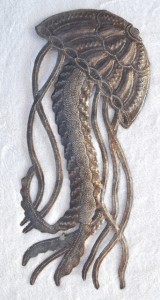
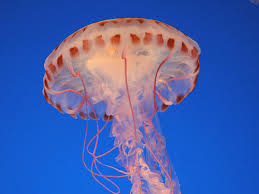
 Summertime is vacation time for many of us, and as my family lives in a place to which people escape winter’s wrath, it’s probably no surprise that we chose to migrate northward as the summer’s heat became too intense for general tolerance. We set off for Victoria, British Columbia but, of all things, by the second day there, I was reminded of Haiti.
Summertime is vacation time for many of us, and as my family lives in a place to which people escape winter’s wrath, it’s probably no surprise that we chose to migrate northward as the summer’s heat became too intense for general tolerance. We set off for Victoria, British Columbia but, of all things, by the second day there, I was reminded of Haiti. I thought how pleased he would be to see his art so perfectly set in this beautiful place. It tickled me later when I re-read the letter he wrote to Beyond Borders accompanying a sample of this very design. He said, “I take this moment extraordinary to introduce to you my model of fish. I think you and your friends are going to like it very much.” He was so right! Haitian art is as perfectly at home at the beach on the Caribbean Sea as it is along the Straits of San Juan in the North Pacific.
I thought how pleased he would be to see his art so perfectly set in this beautiful place. It tickled me later when I re-read the letter he wrote to Beyond Borders accompanying a sample of this very design. He said, “I take this moment extraordinary to introduce to you my model of fish. I think you and your friends are going to like it very much.” He was so right! Haitian art is as perfectly at home at the beach on the Caribbean Sea as it is along the Straits of San Juan in the North Pacific.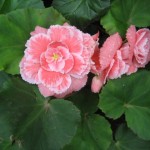
![sm421[1]](https://blog.itscactus.com/wp-content/uploads/2012/08/sm4211-150x150.jpg) And I thought again of Haitian sculptors, this time, Jimmy Prophet and Willie Juiene, whose artful eyes and exacting hands re-fashion Nature’s work so elegantly in steel. The monochrome of the metal they work focusses one’s attention to form and line, and emphasizes the refined precision of the artists’ touch. These men have never seen Buchart Gardens nor are they likely
And I thought again of Haitian sculptors, this time, Jimmy Prophet and Willie Juiene, whose artful eyes and exacting hands re-fashion Nature’s work so elegantly in steel. The monochrome of the metal they work focusses one’s attention to form and line, and emphasizes the refined precision of the artists’ touch. These men have never seen Buchart Gardens nor are they likely 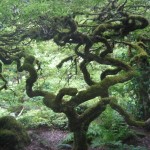 to, but flowers and trees that serve as
to, but flowers and trees that serve as ![2175[1]](https://blog.itscactus.com/wp-content/uploads/2012/08/21751-150x150.jpg) their inspiration are miracles of design no matter where they bloom and flourish. In Haiti, as in Canada, the miracle is the same.
their inspiration are miracles of design no matter where they bloom and flourish. In Haiti, as in Canada, the miracle is the same.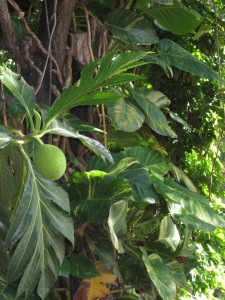 A little on-line investigation revealed that it was breadfruit. Originating in the South Pacific, the species was spread throughout Oceania by intrepid islanders settling the numerous islands of Melanesia, Micronesia, and Polynesia. Due to the efforts of Captain Bligh and French voyagers, a few seedless varieties from Polynesia were introduced to the Caribbean in the late 1700s. These gradually spread to other tropical regions. Breadfruit is now grown in close to 90 countries. Countries like Haiti, apparently.
A little on-line investigation revealed that it was breadfruit. Originating in the South Pacific, the species was spread throughout Oceania by intrepid islanders settling the numerous islands of Melanesia, Micronesia, and Polynesia. Due to the efforts of Captain Bligh and French voyagers, a few seedless varieties from Polynesia were introduced to the Caribbean in the late 1700s. These gradually spread to other tropical regions. Breadfruit is now grown in close to 90 countries. Countries like Haiti, apparently. The trees begin bearing fruit in 3 to 5 years and are productive for many decades. They require little attention or care, and can be grown under a wide range of ecological conditions. Throughout its range, breadfruit is grown in home gardens and small farms interplanted with a mix of subsistence crops, cash crops, and other useful plants. The trees form a protective overstory providing shade, mulch, and a beneficial microclimate. Cultivating breadfruit trees protects watersheds; replacing slash-and-burn agriculture and field cropping with a permanent tree cover. What a wonderful crop to plant in Haiti, where deforestation is at a whopping 98% and watershed damage due to erosion is tremendous.
The trees begin bearing fruit in 3 to 5 years and are productive for many decades. They require little attention or care, and can be grown under a wide range of ecological conditions. Throughout its range, breadfruit is grown in home gardens and small farms interplanted with a mix of subsistence crops, cash crops, and other useful plants. The trees form a protective overstory providing shade, mulch, and a beneficial microclimate. Cultivating breadfruit trees protects watersheds; replacing slash-and-burn agriculture and field cropping with a permanent tree cover. What a wonderful crop to plant in Haiti, where deforestation is at a whopping 98% and watershed damage due to erosion is tremendous.